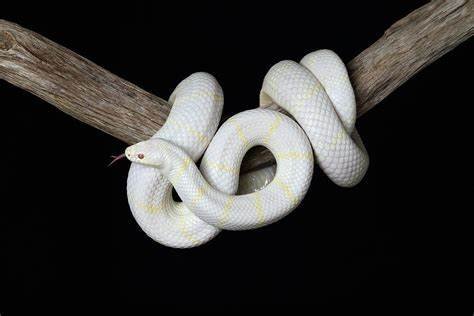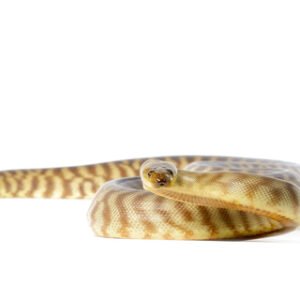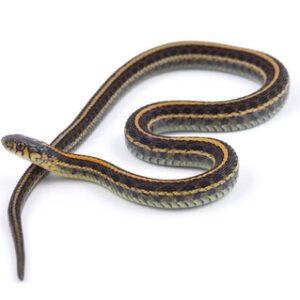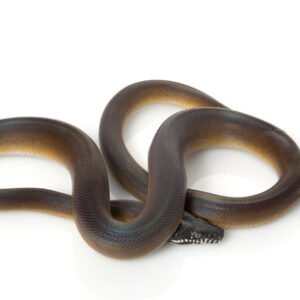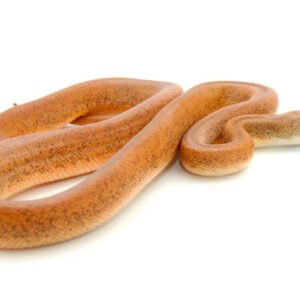The Fascinating World of the White King Snake
Introduction to the White King Snake
The White King Snake, known scientifically as Lampropeltis getula, is an intriguing reptile that has garnered attention due to its striking appearance and varied habits. This non-venomous snake is a member of the Colubridae family, which encompasses a variety of snakes across different environments. The common characteristics of the White King Snake include its unique coloration, typically showcasing a pattern of vivid white and contrasting black or brown stripes along its body. This distinctive coloration not only enhances its visual appeal but also aids in its camouflage within its natural habitat.
White King Snakes exhibit a range of sizes, generally growing between 3 to 5 feet in length, with some individuals reaching up to 6 feet. Their body is slender yet robust, making these snakes agile predators. In terms of habitat preferences, the White King Snake is adaptable and can be found across diverse environments, including woodlands, grasslands, and even urban areas. They thrive mainly in the southeastern regions of the United States but can also be spotted in various other states and parts of Mexico.
These snakes favor areas with abundant cover, such as leaf litter, rock piles, and low vegetation, which provide protection from predators and ideal hunting opportunities. As opportunistic feeders, they primarily consume small mammals, birds, and other reptiles, contributing to the ecological balance of their local areas. The White King Snake’s ability to mimic other snake species serves as a survival tactic, allowing it to slip into the background of its varied habitats while hunting or evading threats. This adaptability, combined with its captivating appearance, makes the White King Snake a fascinating subject for herpetologists and reptile enthusiasts alike.
Behavior and Diet of the White King Snake
The White King Snake, scientifically known as Lampropeltis getula, exhibits a range of fascinating behavioral traits that reflect its adaptability and role within its ecosystem. Primarily, these snakes are diurnal, meaning they are most active during the day. This activity pattern allows them to effectively hunt for food and perform essential bodily functions under the warmth of the sun. Their movement is characterized by a low, undulating glide, which enables them to traverse various terrains with agility. When approached or threatened, the White King Snake may display a defensive behavior by coiling up and hissing, displaying its alertness and readiness to retreat if necessary.
In terms of temperament, these snakes are generally known for being docile while in captivity; however, their behavior can vary in the wild. When hunting, White King Snakes exhibit stealth and patience, often utilizing a methodical approach to track their prey. The primary components of their diet include small mammals, birds, and other reptiles, showcasing their role as opportunistic predators. They are particularly adept at consuming other snakes, which is a remarkable trait that positions them as dominant in their niche.
Hunting techniques of the White King Snake often involve ambushing their prey. They use their keen sense of smell to locate food sources and can strike quickly when the moment is right. This agility and precision not only facilitate their survival but also contribute to maintaining the ecological balance in their habitats. As both predator and prey, these snakes play a crucial role in their ecosystems, helping to control the populations of smaller animals while also serving as a food source for larger species. Overall, the behavior and diet of the White King Snake are vital for its survival and the ecosystem it inhabits.
Care and Keeping of White King Snakes as Pets
White King Snakes, known for their striking appearance and docile nature, can make excellent pets if their care requirements are met. Understanding their habitat needs is fundamental for ensuring a healthy environment. An appropriate enclosure, such as a terrarium, should be at least 40 gallons, providing adequate space for the snake to move and explore. The substrate should be easy to clean and comfortable for the snake, with options like aspen shavings or coconut husk being preferred materials.
The temperature and humidity levels within the habitat are crucial for the well-being of the White King Snake. A temperature gradient should be maintained, with a basking area ranging between 85°F to 90°F and a cooler section at around 75°F to 80°F. Utilizing heat lamps or under-tank heating pads can help achieve these temperatures. It’s also essential to maintain humidity levels between 30% and 50%, which can be monitored using a hygrometer. Regular misting of the enclosure can assist in maintaining proper humidity without overly dampening the environment.
Feeding schedules for White King Snakes typically involve offering appropriate-sized prey items like mice or rats, depending on the age and size of the snake. Juveniles may require meals every 5 to 7 days, while adults can be fed every 7 to 14 days. Ensuring the prey is thawed if previously frozen and appropriately sized is vital to support proper digestion and overall health.
Proper handling and socialization are significant for building trust between the owner and the snake. Gentle handling for short periods can help acclimate the pet to human interaction. Potential owners should also be aware of common health issues, such as respiratory infections or mites, emphasizing the importance of regular veterinary check-ups to ensure the snake remains healthy and vibrant.
Conservation Status and Threats to the White King Snake
The White King Snake, known for its striking appearance and behavioral characteristics, faces several threats that endanger its survival in the wild. Primarily, habitat loss is a significant concern for this species. Urban development, agricultural expansion, and deforestation have led to the fragmentation of their natural habitats, making it increasingly difficult for these snakes to find food and mates. The destruction of wetlands and riparian zones, critical to their ecosystem, further exacerbates the plight of the White King Snake.
Another critical factor threatening the White King Snake is pollution. Pesticides and industrial runoff contaminate the environments where these snakes thrive, leading to a decline in prey populations and potential health issues for the snakes themselves. Heavy metals and chemical pollutants can disrupt endocrine systems, making it harder for the White King Snake to reproduce effectively and maintain healthy populations.
The pet trade also poses a dire risk to their conservation status. While White King Snakes are popular in the exotic pet market due to their unique appearance and docile nature, the over-collection of individuals from the wild can lead to significant population declines. Additionally, the illegal wildlife trade further complicates conservation efforts, as it can undermine regulations designed to protect this species.
In response to these challenges, various conservation programs have been implemented to safeguard the White King Snake and its habitat. These initiatives focus on habitat restoration, stricter regulations on wildlife trade, and public education to raise awareness about the importance of protecting this species. Individuals can contribute to these efforts by supporting conservation organizations, promoting sustainable land use practices, and advocating for the responsible treatment of wildlife. By fostering a deeper understanding of the White King Snake, we can ensure its protection for future generations.

